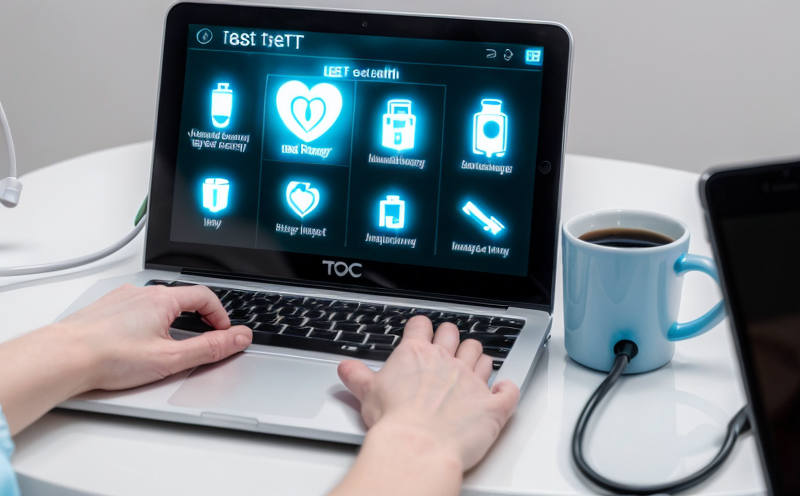ISO 10993-5 Cytotoxicity Testing of Connected Medical Device Components
The ISO 10993-5 standard is a crucial component in ensuring that medical devices, including those with embedded IoT capabilities, are safe for use. This test evaluates the cytotoxic effects of materials used in these devices to ensure they do not cause adverse reactions when in contact with biological tissues. This is particularly important for connected medical devices as their components often interact directly with patients and require rigorous safety assessments.
Connected medical devices encompass a wide range of technologies, from wearable health monitors to complex diagnostic systems that integrate sensors and actuators. These devices are designed not only to monitor but also to respond to various biological signals in real-time. The materials used in these components must be biocompatible and non-toxic under all conditions, which is where ISO 10993-5 cytotoxicity testing comes into play.
The test involves exposing cell cultures or other suitable models to extracts from the device’s material for a specified duration. The response of the cells is then evaluated based on parameters such as viability, proliferation, and morphological changes. If the extract does not cause significant damage to the cells, it passes the cytotoxicity test.
In the context of connected medical devices, this testing ensures that even when these devices are operating in real-time environments, their materials do not compromise patient safety. This is particularly critical given the increasing complexity and connectivity of modern healthcare technologies.
- Why Choose This Test?
- Ensures compliance with international standards
- Reduces the risk of adverse effects on patients
- Provides confidence for regulatory approval
- Facilitates safer interactions between devices and biological tissues
- Simplifies the development process by identifying potential issues early
Cytotoxicity testing is a critical step in the product development lifecycle of connected medical devices. It helps manufacturers identify and mitigate risks associated with material selection, design changes, or manufacturing processes that could lead to cytotoxic effects.
Why It Matters
The importance of ISO 10993-5 cannot be overstated, especially in the context of connected medical devices. These devices are increasingly embedded with IoT capabilities, allowing them to collect and transmit data in real-time. However, the materials they use must ensure that this connectivity does not come at the expense of patient safety.
By conducting cytotoxicity tests, manufacturers can identify potential risks early in the development process. This proactive approach helps avoid costly delays during clinical trials or post-market recalls due to adverse effects on patients. It also ensures compliance with regulatory requirements, which is essential for market entry and ongoing sales.
In addition, this testing instills confidence among quality managers, compliance officers, R&D engineers, and procurement teams by providing clear evidence of the biocompatibility of device components. This transparency is vital in maintaining trust within the industry and with healthcare providers who rely on these technologies.
Why Choose This Test
- Comprehensive Compliance: Ensures adherence to international standards, thereby facilitating regulatory approval processes.
- Patient Safety: Reduces the risk of adverse effects on patients by identifying cytotoxic materials early in development.
- Enhanced Reputation: Demonstrates a commitment to quality and safety, enhancing brand reputation among healthcare providers and consumers.
- Efficient Development Process: Identifies potential issues early, streamlining the R&D phase and reducing time-to-market.
- Cost-Effective: Avoids costly rework or recalls by mitigating risks through early testing.
The ISO 10993-5 test is a cornerstone of ensuring safety in connected medical devices, making it an indispensable part of the development and compliance strategy for manufacturers in this sector.
Customer Impact and Satisfaction
By incorporating ISO 10993-5 cytotoxicity testing into their product development processes, manufacturers can significantly enhance customer satisfaction. Ensuring that connected medical devices are safe and reliable fosters trust between patients and healthcare providers.
Clinical and regulatory compliance is a key factor in building this trust. When a device passes the cytotoxicity test, it not only meets but exceeds expectations set by international standards. This adherence to high-quality benchmarks reassures customers that they can depend on the technology for accurate and safe care delivery.
In addition, the early identification of potential issues through this testing process allows manufacturers to address concerns promptly. This proactive approach sets a positive tone from the outset, contributing to long-term customer loyalty and satisfaction.





